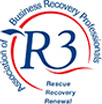Recently introduced legislation can now make directors of insolvent companies personally liable for that company’s outstanding tax liabilities including PAYE, NI and VAT. This though only applies where a company has been through an insolvency process and where a new business has been set up, a process known as phoenixing. The idea behind the current legislation is to try and prevent serial offenders repeatedly using an insolvency process to avoid paying their statutory obligations to HMRC. For the vast majority of directors who face an insolvent position, the new rules will not apply and they will usually be protected by the limited liability status of their company.
Where HMRC have a concern over a particular insolvency and have reason to believe that the directors have deliberately tried to avoid paying the company’s lawful tax liabilities, HMRC can issue a joint and several liability notice to those directors.
In order to reduce the possibility that genuine small business start ups and entrepreneurs are not caught by this legislation, there are minimum thresholds that will apply. For a joint and several liability notice to be issued, the total unpaid tax liability from the old companies must be more than both of the following:
- £10,000
- 50% of the total amount of those companies’ liabilities to their unsecured creditors.
Additionally, there are four separate conditions that must be satisfied before HMRC can issue a joint and several liability notice. These are summarised below:
- In the 5 years preceding the date of the most current insolvency, the individual i.e., the director, had a relevant connection to at least two old companies that were subject to an insolvency procedure and had outstanding tax liabilities. The five year period is defined as the period of 5 years ending with the day on which the joint and several liability notice was issued
- A new company is or has been carrying on a similar trade to the old companies
- The individual has a relevant connection to the new company
- There is a tax liability of more than £10,000 and that is more than 50% of the total amount of those companies’ liabilities to their unsecured creditors.
Where HMRC issues a joint and several liability notice to an individual for a repeated insolvency and non-payment case, then that individual is jointly and severally liable with the new company for both of the following:
- Any unpaid tax liability of the new company which is unpaid on the day that the notice is given
- Any tax liability of the new company that arises during the period of 5 years beginning with the date on which the notice is given.
The joint and several liability notice must include the following:
- The name of the company to which it relates
- State the reasons why HMRC considers that the relevant conditions have been met to issue such a notice
- Detail the amounts for which the individual is liable
- Explain what the notice means to the individual
- Offer a review by HMRC
- Explain the individual’s right of appeal.
For the vast majority of directors, the above will not apply. However, should you have any concerns over this potential liability or are the recipient of such a notice and would like to discuss this in further detail, then simply contact anyone of our team who will be delighted to assist you.
We have offices across the Midlands and in London
Contact our Insolvency Practitioners in London
Contact our Insolvency Practitioners in Nottingham
Contact our Insolvency Practitioners in Derby
Contact our Insolvency Practitioners in Stoke on Trent


